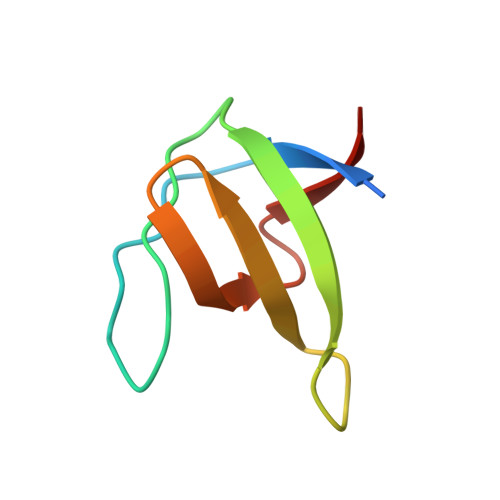Role of interfacial water molecules in proline-rich ligand recognition by the Src homology 3 domain of Abl.
Palencia, A., Camara-Artigas, A., Pisabarro, M.T., Martinez, J.C., Luque, I.(2010) J Biological Chem 285: 2823-2833
- PubMed: 19906645
- DOI: https://doi.org/10.1074/jbc.M109.048033
- Primary Citation of Related Structures:
3EG0, 3EG1, 3EG2, 3EG3, 3EGU - PubMed Abstract:
The interaction of Abl-Src homology 3 domain (SH3) with the high affinity peptide p41 is the most notable example of the inconsistency existing between the currently accepted description of SH3 complexes and their binding thermodynamic signature. We had previously hypothesized that the presence of interfacial water molecules is partially responsible for this thermodynamic behavior. We present here a thermodynamic, structural, and molecular dynamics simulation study of the interaction of p41 with Abl-SH3 and a set of mutants designed to alter the water-mediated interaction network. Our results provide a detailed description of the dynamic properties of the interfacial water molecules and a molecular interpretation of the thermodynamic effects elicited by the mutations in terms of the modulation of the water-mediated hydrogen bond network. In the light of these results, a new dual binding mechanism is proposed that provides a better description of proline-rich ligand recognition by Abl-SH3 and that has important implications for rational design.
- Department of Physical Chemistry and Institute of Biotechnology, Faculty of Sciences, University of Granada, 18071 Granada, Spain.
Organizational Affiliation:

















